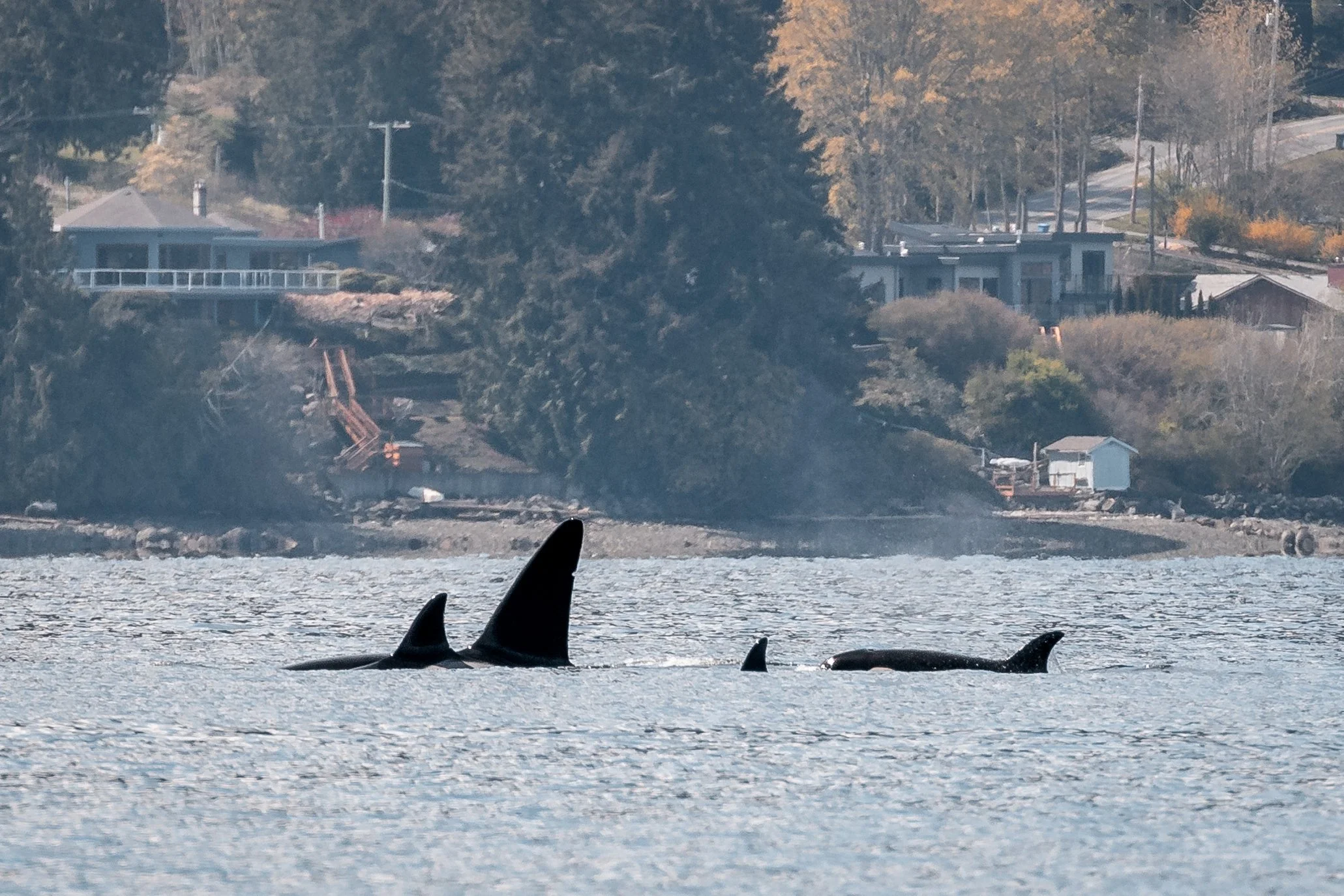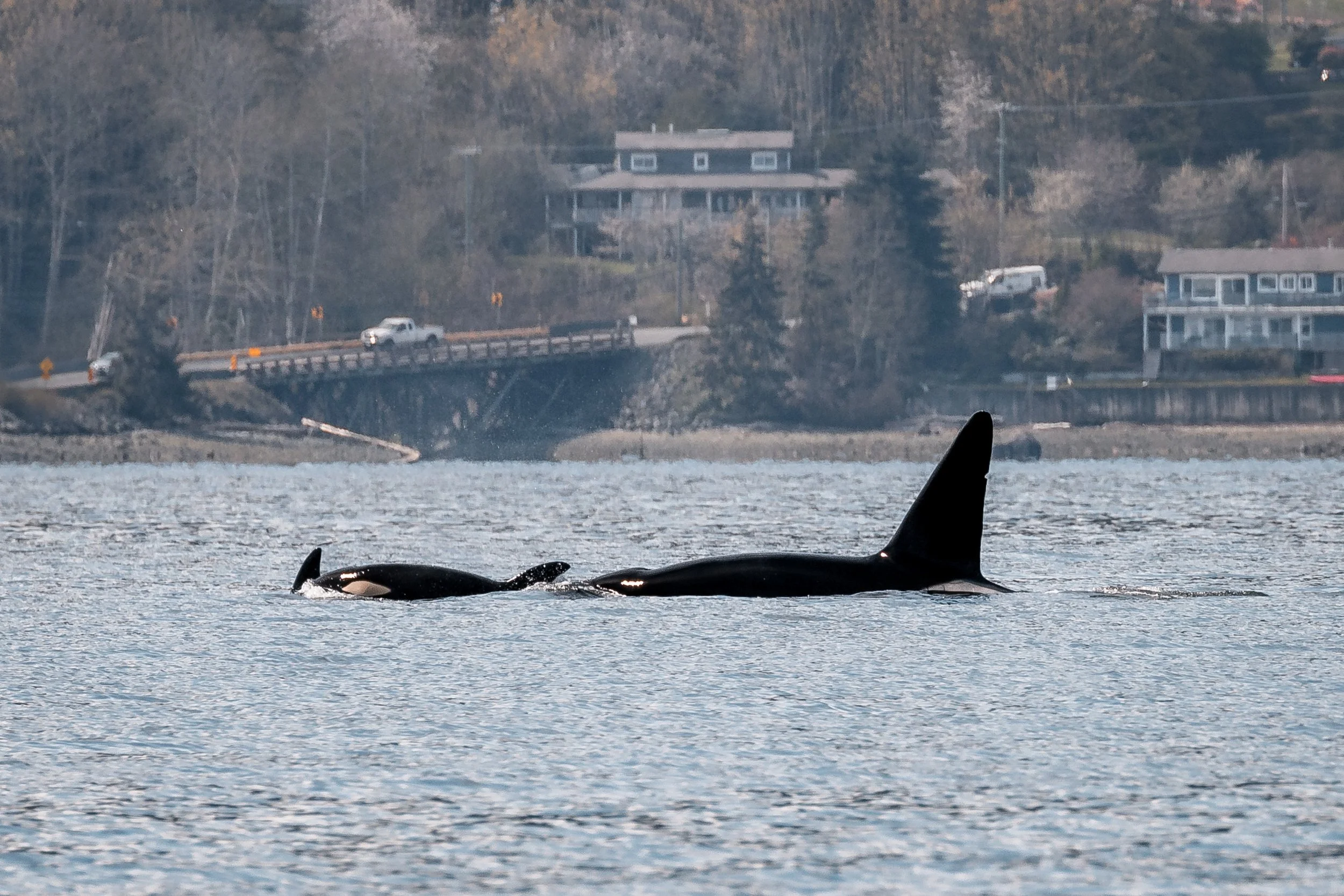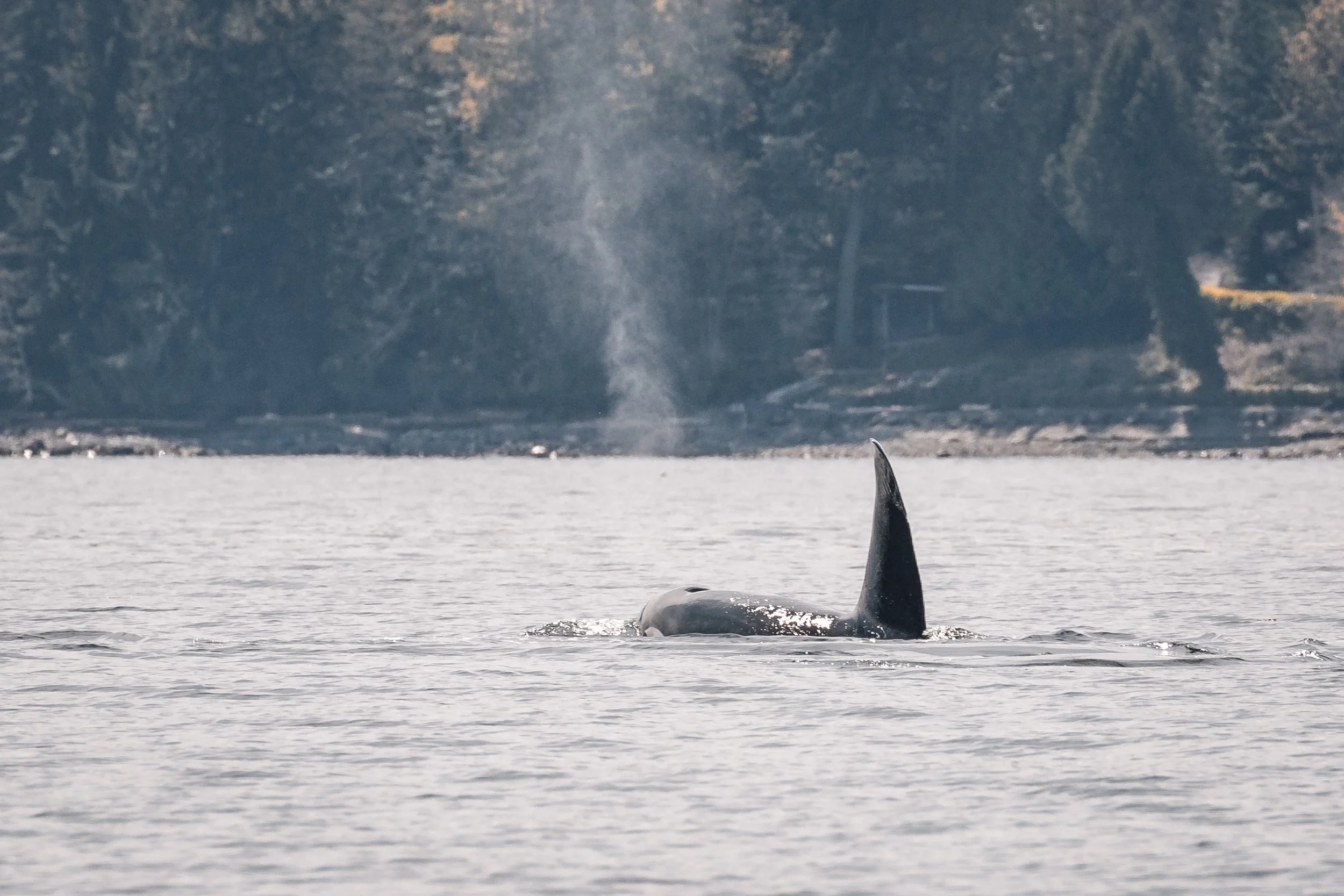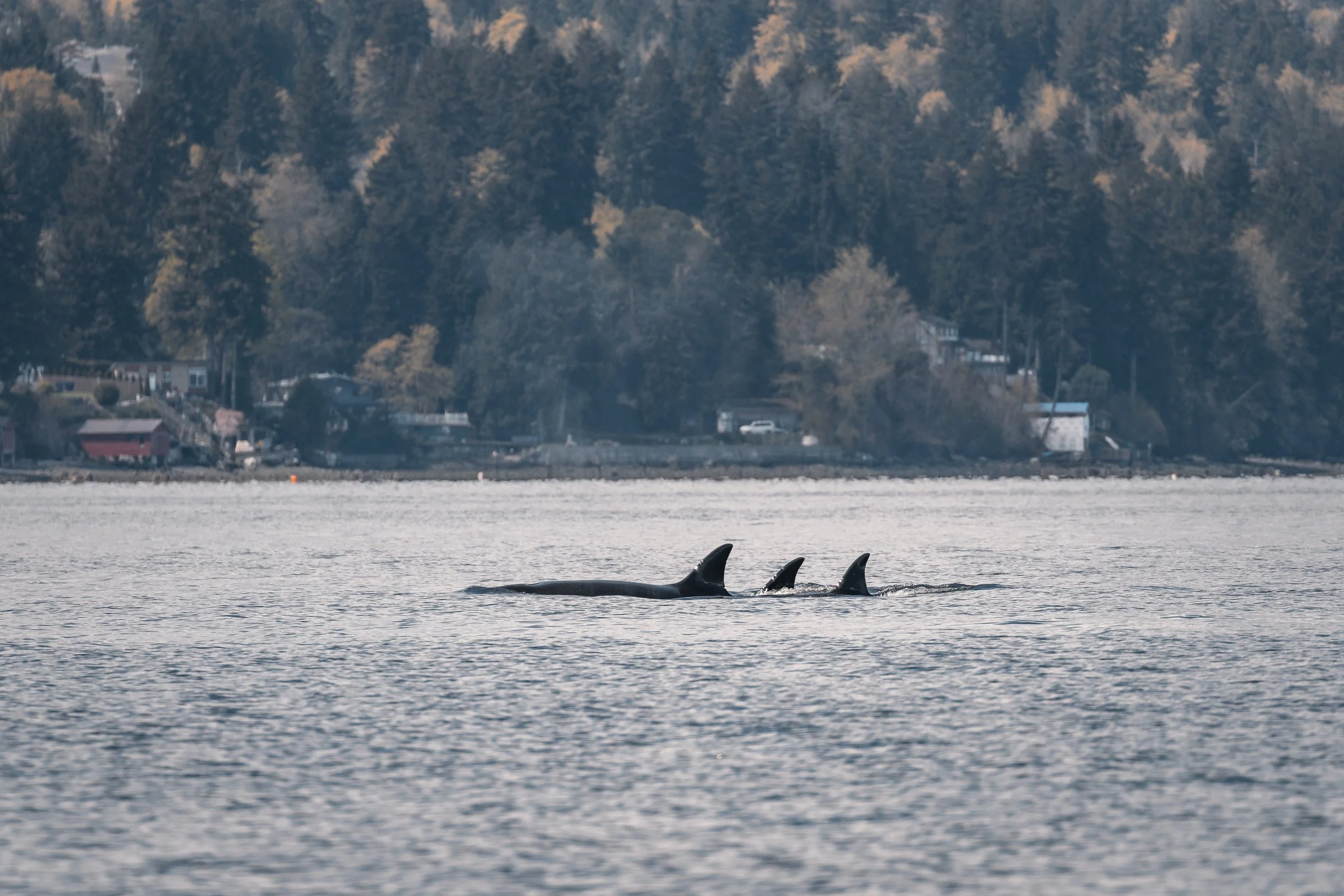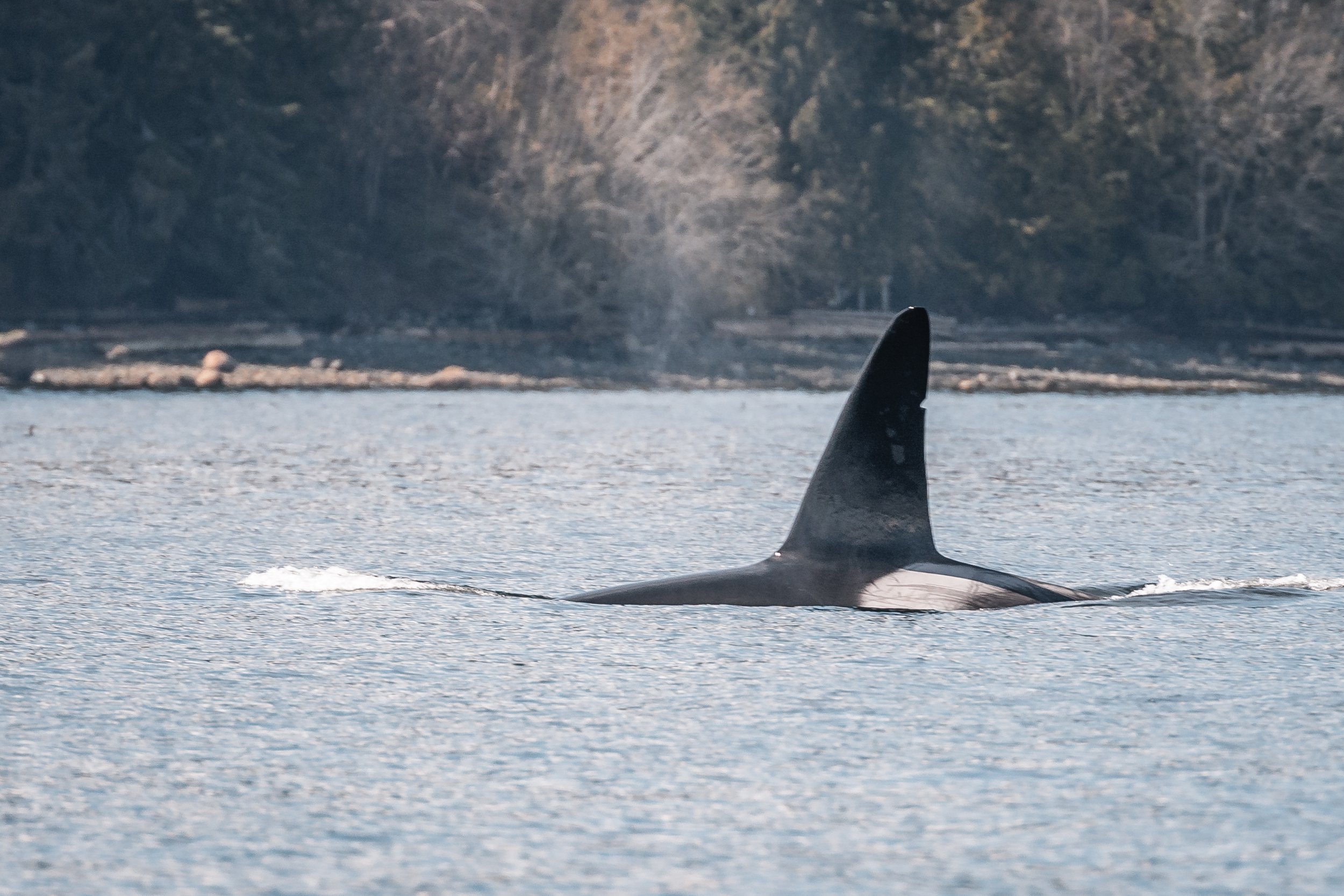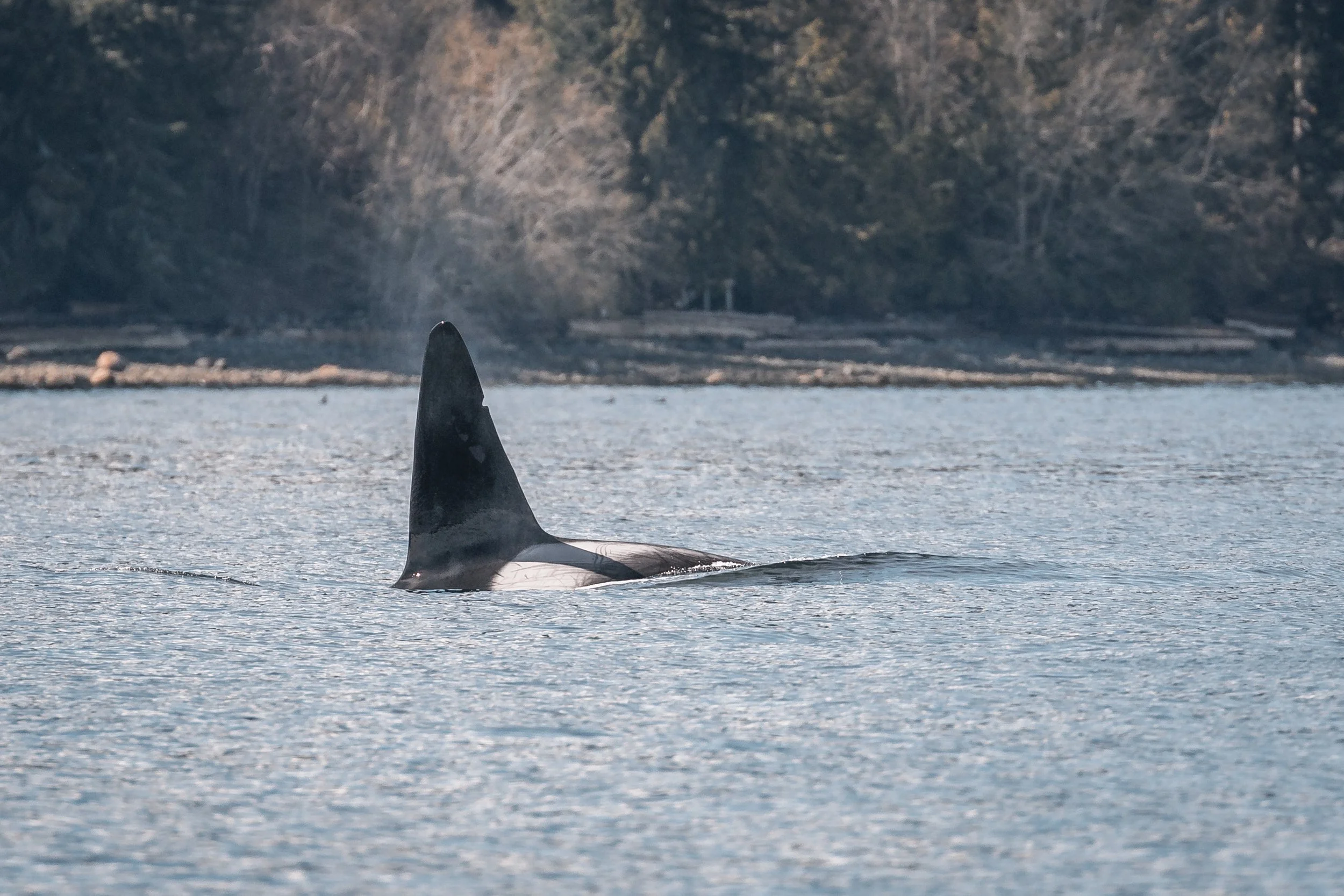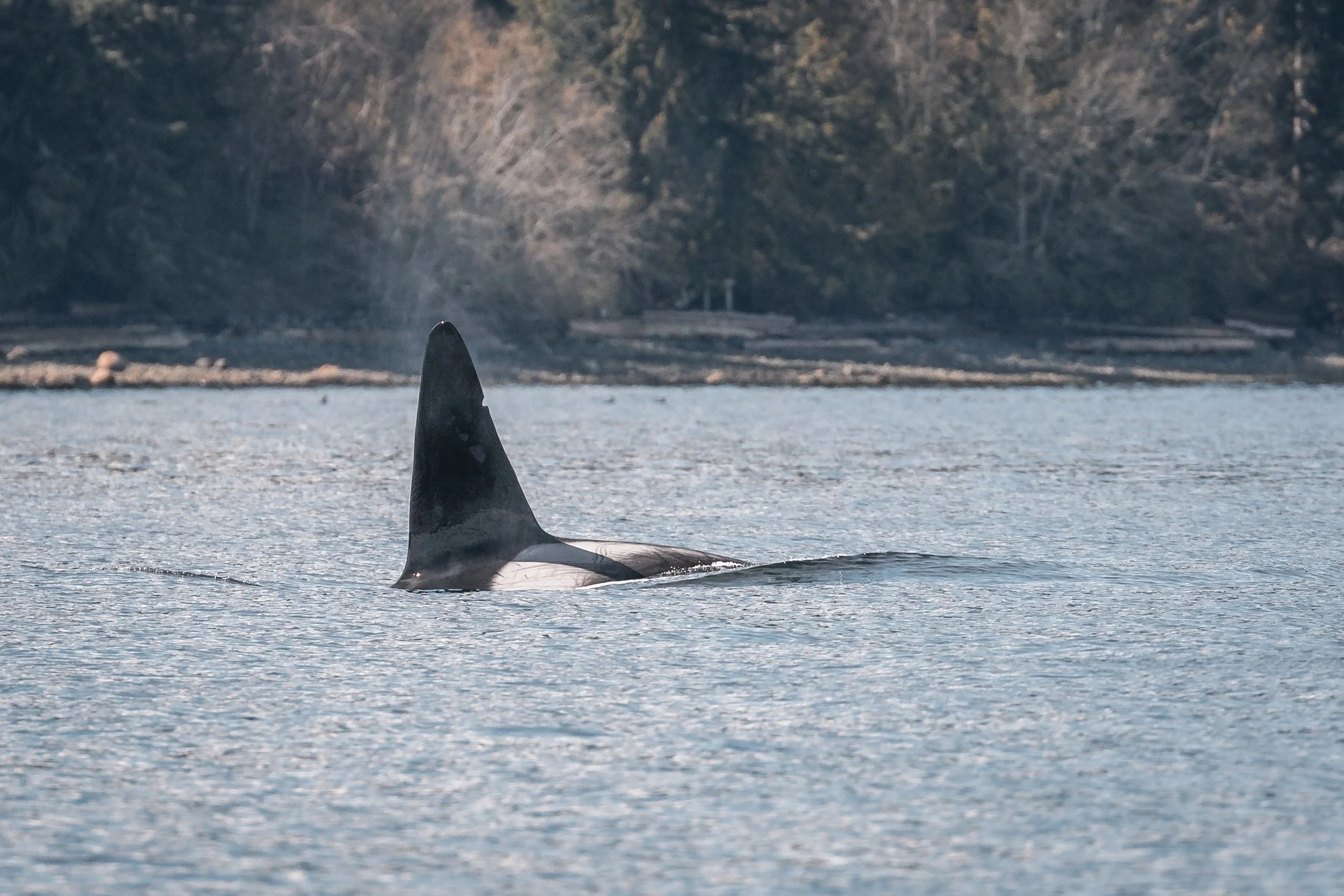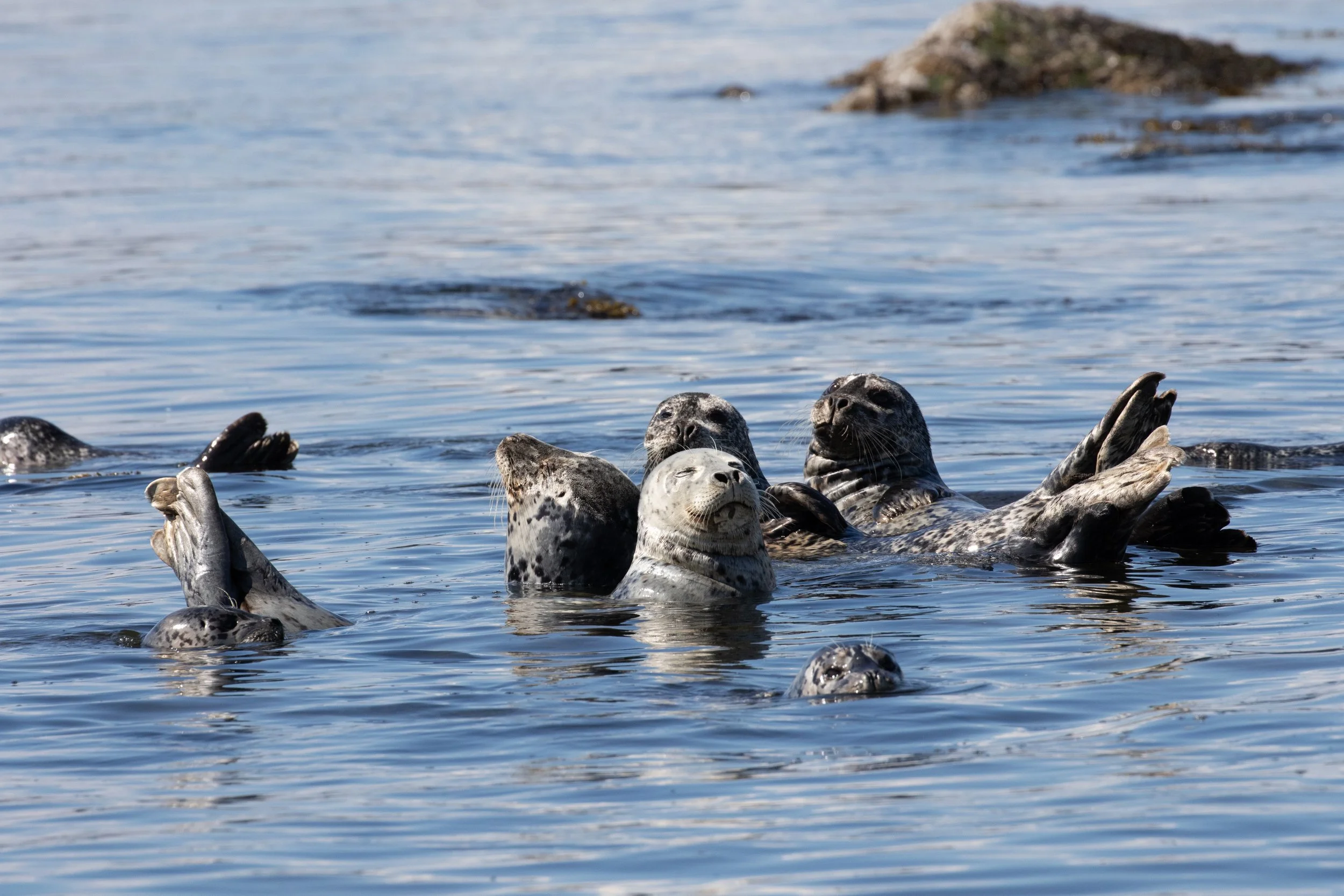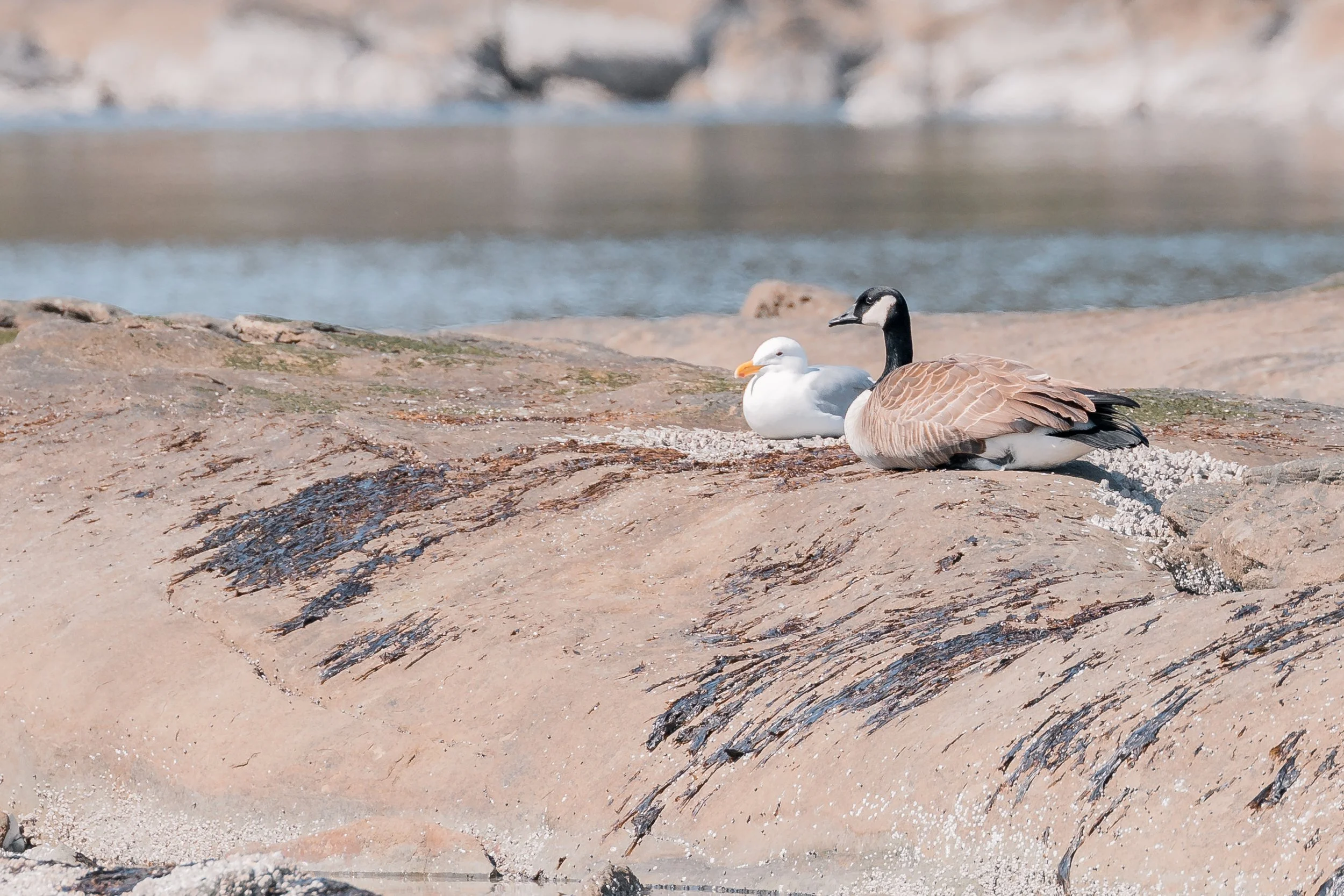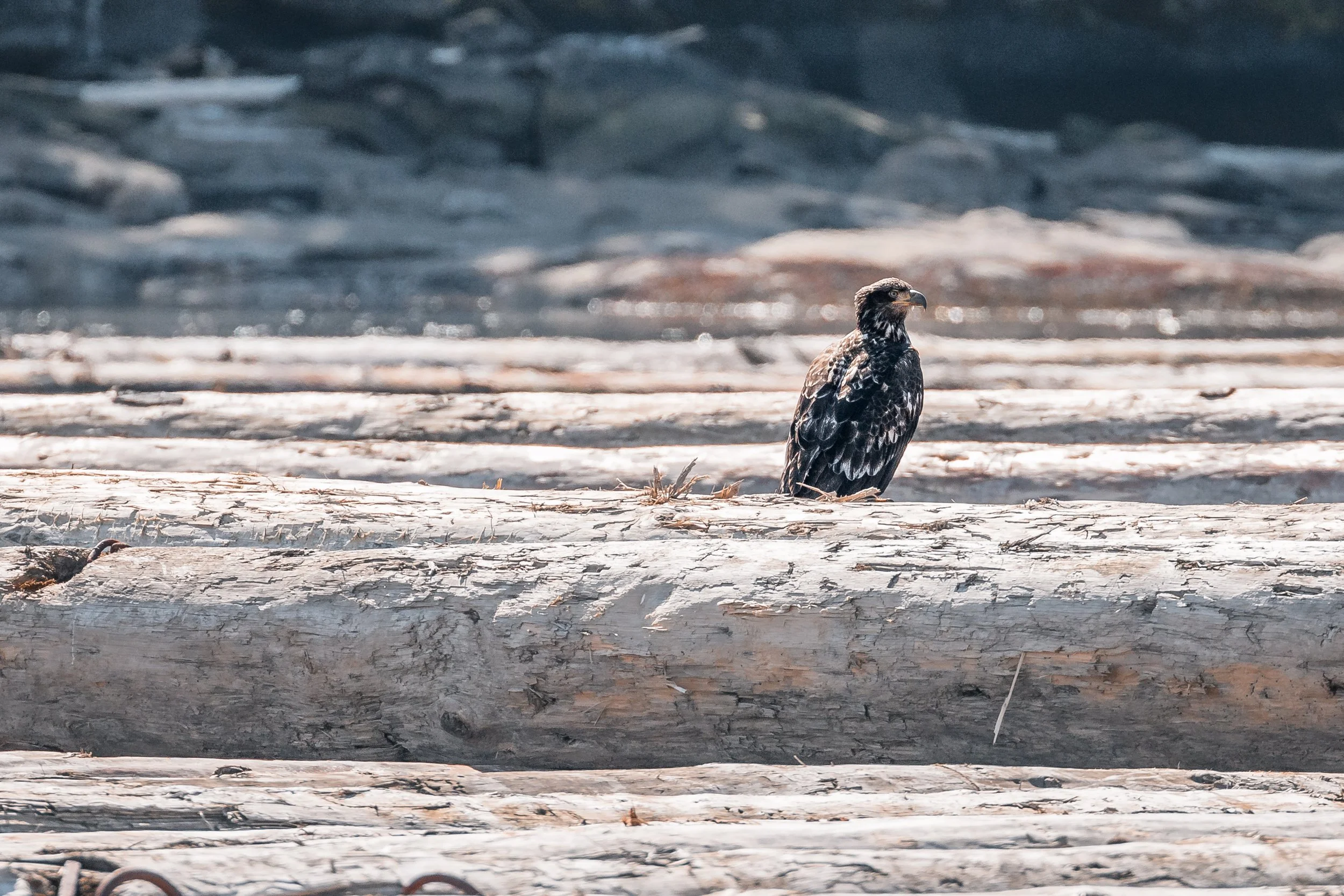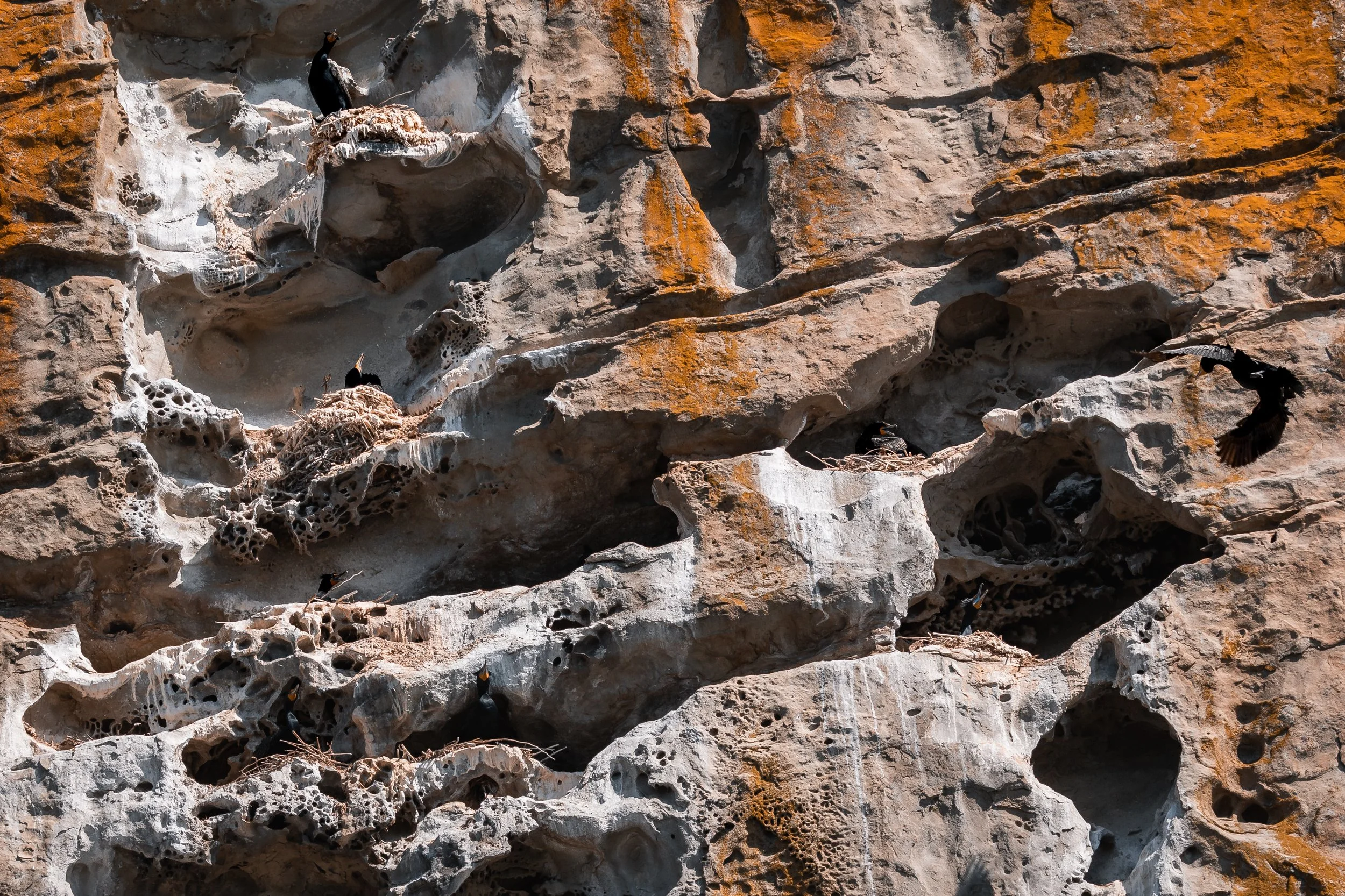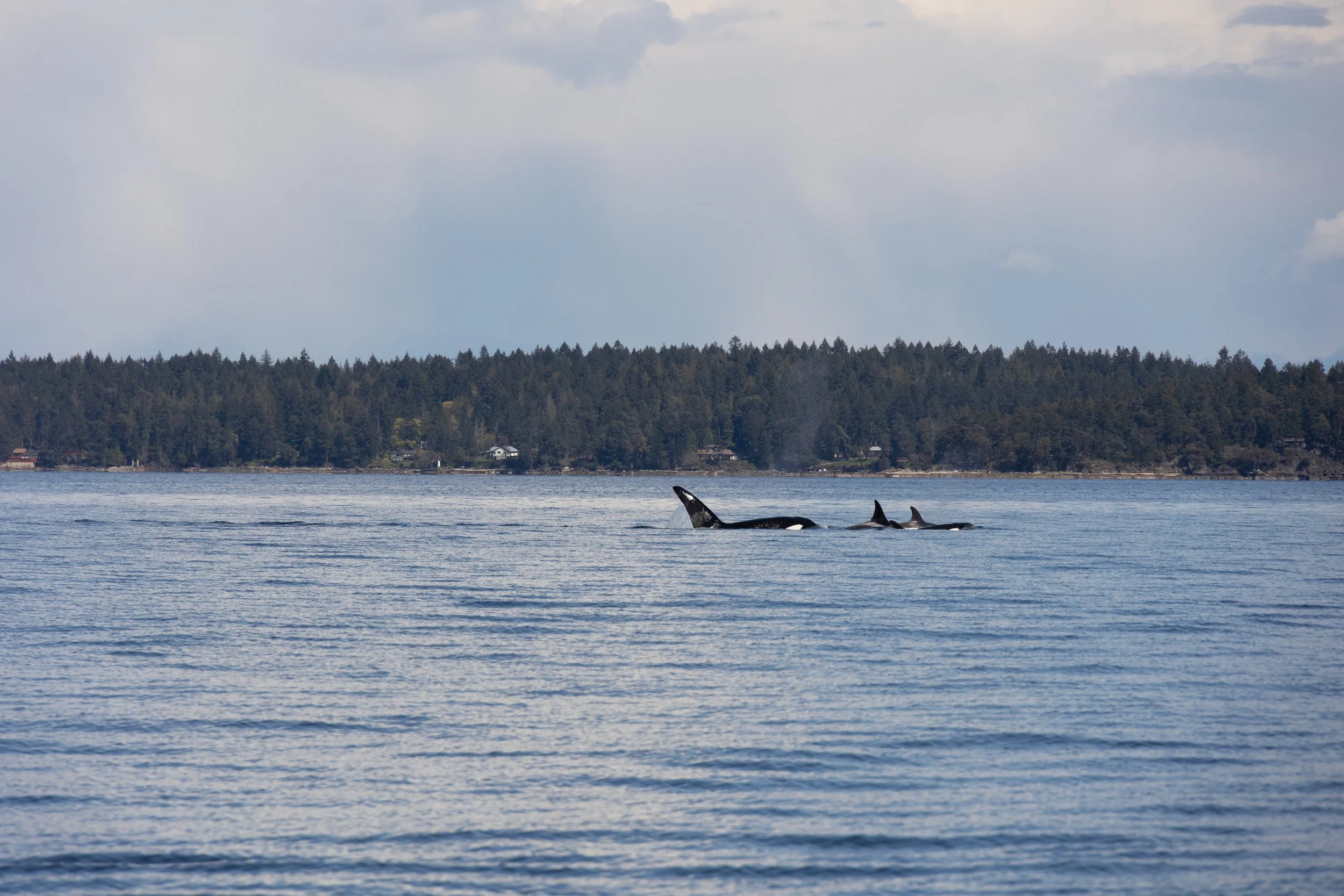April 14th - T-party in Stuart Channel
Two of our boats departed the Nanaimo Harbour at noon on the 14th, eager to find some whales. As usual our boats take a different route from each other to increase our chances of finding whales. Cascadia, our open zodiac, traveled through Northumberland channel towards Dodd Narrows, while our Semi-Covered vessel went around the North end of Gabriola Island. It didn’t take long before our open boat spotted blows in the distance. A group of Orca were hanging out in the North end of Stuart Channel, just East of Ladysmith. Our semi-covered boat traveled through Gabriola Pass to meet up with them and see what the orca were up to.
This group consisted of T018 Esperanza, her daughter T019 Nootka and Nootka’s sons Galiano and Spouter. We spend a lot of time with these 4 so they are pretty easy to ID when we arrive on scene. Today however, the T018’s were not alone. They were traveling with another pod, the T023D’s. This pod is lead by matriarch Axle and she travels with her eldest son Robin (2012), Ross (2015) and youngest T023D5 (2019).
These 8 whales were circling about and hunting seals as we watched from our boats. On average orca need about 300lbs of food a day, large males and pregnant or lactating females need more food, while young whales and senior females would need less. Harbour seals, their main food source, weigh about 200lbs as adults. A group of 8 whales would need around 2400lbs of food each day, or 12 harbour seals. That’s a lot of food to find, which is why orca typically travel over 100 miles a day searching for their next meal. During a hunt orca will also share the food they get, so everyone in the pod gets a bite which means one harbour seal is more like an appetizer for these whales. Orca don’t just eat harbour seals though, if this group was hunting sea lions, then about 2 sea lions would do for an entire day’s worth of food.
T019B Galiano with a member of the T023s. Photo by Rebecca S.
The T023D’s are a pod we hardly ever see. They spend a lot of time at the northern end of Vancouver Island, along the northern shores of BC, up in Alaska and even travel out to the Tofino frequently. While it’s nice to the T023D’s they are a good reminder of the problems our orca face. Axle is the 5th born to T023 Janice. Janice’s first 3 calves unfortunately have passed away, with Axle and her sister Cindy being Janice’s only surviving children. This isn’t too uncommon among orca as they do have a very high infant mortality rate. Researchers often wait over a year before naming new whales because the first year to 2 of an orca’s life are the hardest to get through. During this time the young whales are relying on their mom’s milk which is very rich in fat. It’s also very rich in toxins.
To understand where these toxins come from, we must know about the food chain. On our Pacific Coast the Bigg’s Orca feed on seals, sea lions, porpoise, and even other whales. Each of these animals tend to prefer fish and crustaceans as their main food source. The higher up the food web you go, the more toxins there are in your food because toxins are stored in the body’s fat reserves, not removed from it. This is called bioaccumulation. As orcas age and eat other marine mammals they are absorbing the build up of toxins from them. The majority of the toxins our whales ingest are PCBs and microplastics. PCBs were used heavily from the 1920’s to the 1970’s and were made illegal in from 1970 to 1980 (each country banned them separately instead of a global ban occurring all at once), but they are still found in our water ways today.
Microplastics are the result of plastic breaking down into very small particles and can be found in fresh water, salt water, the air we breath, and the plants and animals we eat. It’s everywhere, and just like PCBs it accumulates in our bodies. Like orca, we store toxins in our fat cells as well.
So how do these toxins effect the young orca? When a mother has her calf, her body begins producing milk by converting her stored fat into very rich milk. This milk contains the toxins that have been building up in the whale since their birth. Many orcas produce their first calf in their late teen years, which means they have 15-20 years of toxic build up in their fat cells that gets passed on to their calves. The first-born orca calves have a very high mortality rate, nearly 50% of orca calves will not make it through their first year of life.
However, as orcas have more calves, the toxic build up in their fat is reduced, as it would likely be offloaded during the previous calf’s life. So, with Cindy and Axle being the 4th and 5th born to Janice their chance of survival was much higher than their siblings who didn’t make it.
When we look at Cindy and Axle’s children, they both lost their first 2 calves and have 3 surviving children they travel with now.
Axle and Cindy are both still very young and have another 15-20 years to produce more offspring. We hope to see these moms with happy healthy babies in the coming years.
From left to right: T018 Esperanza, T019B Galiano, T023D5, and T023D4 surfacing. Photo by Rebecca S.
T023D5 surfacing in front of T019B Galiano. Photo by Rebecca S.
T019B Galiano surfacing swimming away from the boat! Photo by Rebecca S.
The T023Ds surfacing together. Photo by Rebecca S.
T018 Esperenza followed by the T023Ds. Photo by Rebecca S.
T019B Galiano. Photo by Rebecca S.
T019B Galiano. Photo by Rebecca S.
T019B Galiano. Photo by Rebecca S.
T018 Esperanza surfacing and showing off her saddle patch. Photo by Rebecca S.
T023D4 (left) and T023D5 (right). Photo by Rebecca S.
T019B Galiano. Photo by Rebecca S.
T019B Galiano. Photo by Rebecca S.
T019B Galiano. Photo by Rebecca S.
From left to right: T019B Galiano, T023D Axle/brighty, T023D5 and T023D3. Photo by Rebecca S.
Bye Galiano! Photo by Rebecca S.
Harbour Seals! Photo by Rebecca S.
Banana pose! Photo by Rebecca S.
I see you! Photo by Rebecca S.
I’m keeping my eye on you….Photo by Rebecca S.
Canadian goose and gull best friend. Photo by Rebecca S.
Juvenile bald eagle hanging out on the log boom. Photo by Rebecca S.
Juvenile bald eagle in flight! Photo by Rebecca S.
Cormorant on the Gabriola Bluffs! Photo by Rebecca S.
Cormorant bluffs. Did you know all that white is their poop? Photo by Rebecca S.
Photo by Rebecca S.
Check out that iridescence in their feathers! Photo by Rebecca S.
Beautiful views through Porlier Pass! Photo by Rebecca S.
T019B Galiano with T023D and two of her kids! Photo by Janine VDL.


